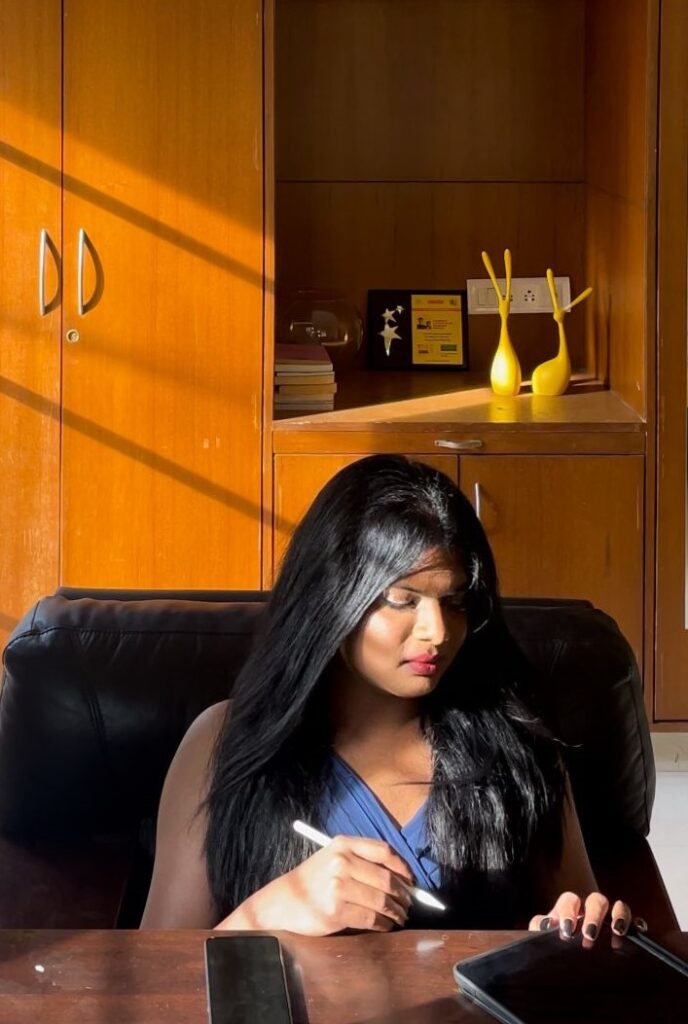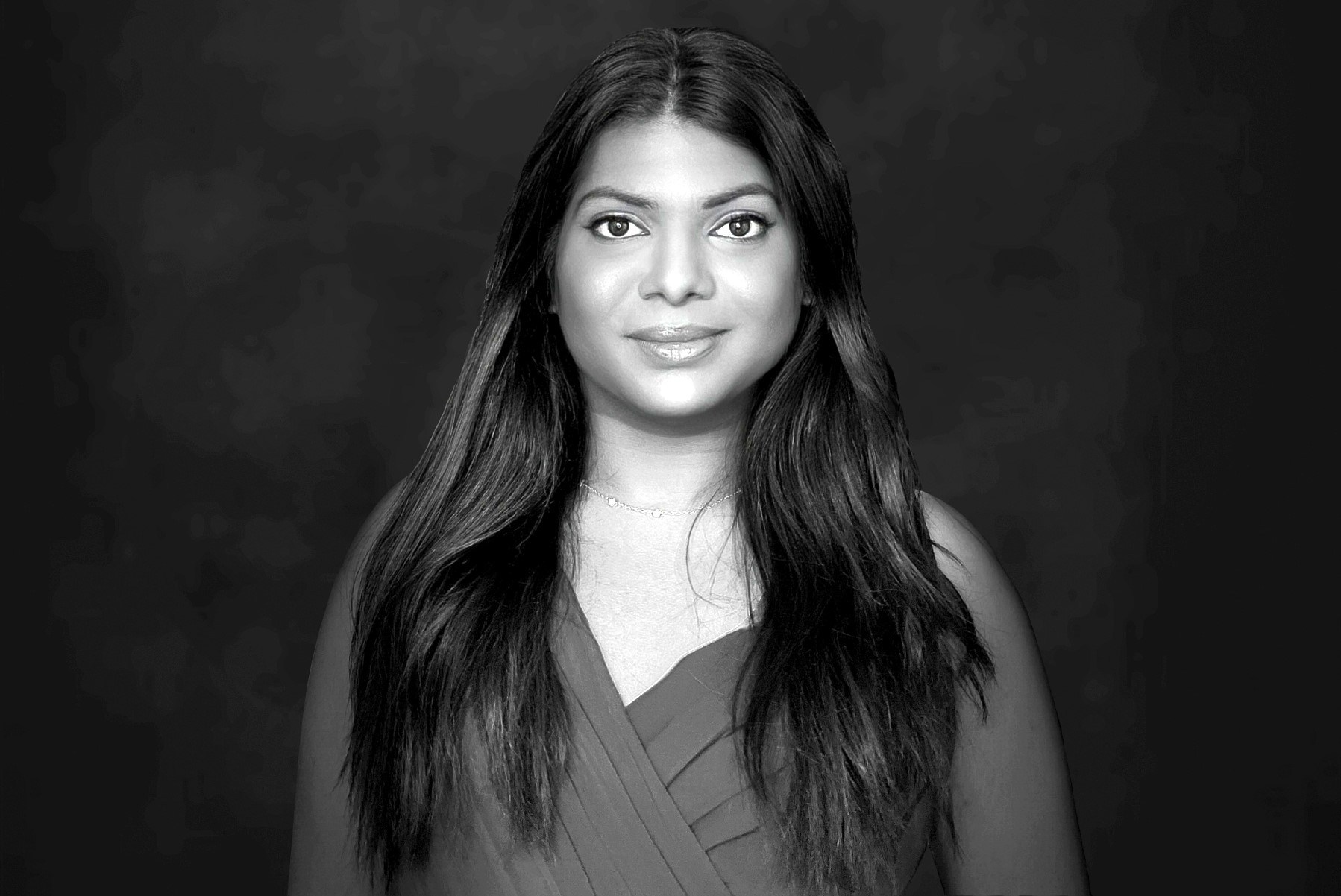I’m Jaya Nila, Architect and Founder of ‘The Architecture Place’, Bangalore. On the surface, my story is not all that different- I come from a conservative middle-class household, did great in school, survived university, and today, I am a professional architect.
What is the catch, then?
What makes my story unusual is that I’m a trans woman.

Well, I wouldn’t call it entirely unusual. To give you a perspective, imagine your life exactly as it is- except you have to play a character in every waking moment. You may not walk as yourself, talk as yourself, laugh as yourself, or express any form of emotion as yourself. You will not be seen or addressed as you are. You cannot desire things as yourself. And if you take pause moments in playing this character, you will be ridiculed, mocked or even harmed. Except that, it’s all the same, usual.
Even though I realized my identity as a woman at a very young age, I was apprehensive that conversations about such would do more harm than good, given the milieu. Most trans kids fall prey to systemic transphobia, harassment, domestic violence, abuse, suicidal thoughts, bullying and abandonment. I was extremely fortunate to pave a successful academic path despite having painfully contemptuous experiences. Even as a child, I never blamed myself because I knew they were my instincts; I knew it must be normal.
‘Transgender’ is a scary word. Isn’t it? I was conditioned to hate the word and, inevitably, myself too.
“I am a trans woman”- enough words to erase the fact that I am one of the kindest people you will meet or that I was spectacularly popular in school. Enough words to overwrite that I graduated from one of the best institutes in the country. I am an award-winning architect, a young entrepreneur, a friend, a human and a woman. All buried beneath hate so irrational that now I am labelled as “crazy” and “confused”.
It is convenient to hate, right? Because to love is to understand. To understand, we need conversations- not to be told what I am going through, but to be heard, to know a story that is mine. I have lived and felt- assessed, denied, survived, suppressed and breathed free. I have done it all. All I ask is for you to please listen.
Thinking back in retrospect, I was trying very hard to fit in. It was my defence mechanism. I held my identity a secret because it was necessary. If I was not good at maintaining this character- would I have still made it out of my university? Or my workplace? It is a scary question. One I am uncertain of the answer to.
But should this question even exist in the first place? As architects, we are meant to build inclusive spaces. Why did we not make an inclusive framework for society? Why do I and people ‘like me’ struggle to find a place to fit in? The societal setting subtly yet strictly alerts me of the unwritten binary rules. Anyone who did not fit into the cisgender heterosexual stereotype could bluntly be discarded as ‘unworthy’ and ‘unequal’.
So, to prove my worth, I shifted to a new city. Bangalore.
When I moved to Bangalore, it was a difficult start. But, soon, I started working towards a successful career. It was the second wave of covid- business in India was not pleasant, especially when you are just starting with it. Being a trans person did not help. So I expanded projects in the US with the help of a friend. It was a remarkable turning point when I won TATA’s “Notions of India”, an International design competition. Subsequently, I was invited to present at the ‘Steel Day’ event in Mumbai. I recollect the moment I finished my speech and wondered, “Would it have been the same if they knew?” I like to think it would. Over the next few months, I won similar competitions through which I was able to develop contacts and an independent career.
Recently, my presentation at the ‘Young Architects Festival’ in Kozhikode was well received. Somehow, my success was a distraction. This was the plan all along. To protect myself with merits and accomplishments so I can finally tell them who I am without needlessly facing unfavourable consequences. Should I have to be extravagantly successful to be heard and accepted? Will it be the same for someone else? What if I was mediocre at what I did? What if my resume does not have multiple awards? Do I not deserve the basic respect that most people are adorned with by default? Why does my respect have to be earned when it is merely given to everyone? My questions remain unanswered.
Sometime in November, during a busy afternoon in Bangalore, I was returning from a client meeting, dressed up like society’s definition of a male. I was in a cab at a traffic junction, where I saw a transgender person seeking money from every vehicle. She reached my cab and put her hand out, followed by delayed eye contact. She paused for a moment and examined me closely. She knew my secret. With steady eye contact, she noticed the laptop on my lap, my clothes, accessories and my phone. She proudly smiled and nodded as if she was happy for me. The glass window that separated us told two contrasting stories. Two people with similar battles live very different lives. This incident triggered me to want to come out. I realized my privilege- I wanted to change the preconceived notion and stereotypes about the community. Nobody imagines a classmate, or a co-worker, or a friend when they think of a trans person because we did not make space for them. We did not make it easy for them. I initially came out to a small group of friends and immediate family. Even though there was an adverse reaction from my family, my close friends and colleagues stood strong as a support system. While I was dealing with verbal abuse and attacks, my family was also adamant about taking me to conversion therapy (a form of pseudo-medical and illegal practice).

Through the support of NGOs and lawyers, I managed to help myself from the unthinkable situation. I spent years building a career and a place to live, but I still feel unsafe in my own home sometimes. It is horrifying to go through airport security or take any form of public transportation. I experience discrimination, from everyday experiences to being turned down from nearly agreed-upon offers. My parents somehow believe I am now inferior. I came out publicly as a trans woman in November of 2022. I will soon be starting my medical transition. I hope as I fight these battles, I make way for someone who does not know how to fight. I am carrying a vicarious responsibility, but I am uncertain of what’s coming for me. My secret is no longer a secret. Now that it is out, will I still make it?
Resonating with the initiative at a personal level, the author, Jaya Nila, is one of the advisors at Gender Parity: Architecture Profession in Post-Binary India- an initiative working towards promoting gender inclusivity within the profession.








3 Responses
I respect you and admire you for what you are and open about it.
Salute.
Really happy that you found your voice!! Proud of you Jaya !! Stay strong!
!! Stay strong!
